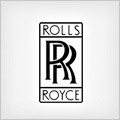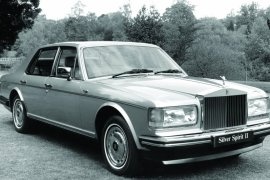
ROLLS-ROYCE Silver Spirit
Generations Timeline, Specs and Pictures

The third generation of Rolls Royce Silver Spirit was born in 1993 and, even if the design was pretty much the same with the previous version, the main improvements could be found under the hood.
The new Silver Spirit comes with an upgraded version of the popular 6.75-liter V8 engine which is now able to produce no less than 304 horsepower and a maximum speed of 141 mph. In addition, the British car manufacturer introduced a brand new safety feature, the dual airbags, as well as independent-adjustable rear seats. The third generation of the car was discontinued in 1998 when Rolls Royce came out with the fourth edition.

Rolls-Royce introduced the Silver Spirit in 1980 and, after nine years on the market, the British carmaker made a decisive step and improved the car.
The British carmaker introduced the Silver Spirit in 1980 and left it untouched for almost a decade. It didn’t care too much about fashion or design trends. It was a class of its own, and the only true competitor was its sibling brand, Bentley. But, as time go by, Rolls-Royce had to upgrade the car and comply with emission regulations. Along with the engine upgrade, it refreshed the exterior as well.
Rolls-Royce’s massive silver grille that resembled the Greek Parthenon was still vertical and flat, and the rectangular headlights sported corner-mounted turn signals. The wrapped-around bumper was thicker and sported an apron bellow to decrease the ground effect at higher speeds.
Inside, the car received a new, smaller, two-spoke steering wheel and minor updates for the audio system. Like its predecessor, it featured a wood grain on the dashboard, but the customers could have chosen almost any other materials. It was the most expensive car in the world without a tachometer, but Rolls-Royce drivers never really needed it. On the upper side of the dash panel, the carmaker installed a leather-wrapped cover, which drops some shade over the instrument cluster. The owner could have chosen a bench or two individual seats with a mini-bar between them.
The most important update was under the skin. Rolls-Royce installed a Bosch-Motronic fuel injection system, replacing the older carburetors. Until the 1991 winter, the Silver Spirit II featured a three-speed automatic transmission. Starting with 1992, all models received a four-speed automatic. It also got a real-time self-leveling suspension. Last but not least, Rolls-Royce introduced the ABS as a standard feature.

Rolls-Royce introduced a new luxury range in 1980 based on a re-worked platform from the 1965 Silver Shadow, but with more power and comfort.
Back in the day, Rolls-Royce launched a new model when and if it feels like doing it. The Silver Spirit’s predecessor was the best-selling model built by the British carmaker from all times. So some might consider that there was no need for a new model. Yet, the Silver Spirit hit the market in 1980 along with its longer-wheelbase sibling, the Silver Spur. It featured a new design, drivetrain, and suspension. But the high-quality materials and craftmanship remained the same.
By 1980, the glorious Silver Shadow looked already old, and the customers were satisfied with the look of the Silver Spirit. Instead of the ’60s rounded shapes and shaved edges, the car was exactly the opposite. It sported rectangular headlights with corner-mounted turn signals. In the middle of the front fascia, the radiator grille stood straight and proud, protected by the Spirit of Ecstacy. The beltline was almost straight from front to back, with a slight slope behind the C-pillars.
Inside, the burr-walnut wood veneer from the dashboard and center console perfectly matched the exquisite Connolly leather upholstery. It was clearly a car built for the back-seat passengers who usually owned the car. Its long wheelbase allowed the carmaker to offer plenty of room for the front or the rear occupants. A split bench at the front, divided by a pair of folding armrests in the middle, created a comfortable area, while at the back, the carmaker installed a bench profiled for two passengers.
Under the hood, Rolls-Royce installed a 6.75-liter V-8 engine improved for more power. The actual figure for that was not published officially. The carmaker said that it had enough.























































